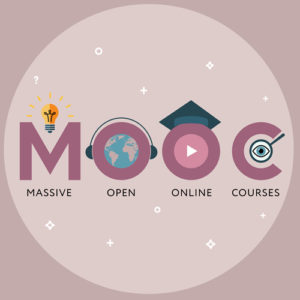Brick-to-click education is not a matter of if, but rather, now. In a constantly growing global community, education modalities are evolving to meet the demands of a knowledge-thirsty and driven population.
One approach to meet these demands is the development of Massive Open Online Courses (MOOCs). MOOCs are intended to:
- Host large numbers of students.
- Accommodate an internationally diverse community.
- Increase access for students from non-traditional regions.
- Support international marketing and recruitment strategies for universities.
However, the almost-10-year experience with MOOCs has yielded mixed outcomes. The average retention rate for MOOCs is four percent of the enrolled class, which defeats the purpose of providing accessible, available, and equitable education.
Further, MOOCs have traditionally been offered as a one-time event. That raises questions about the sustainability of the approach.
4 keys to successful MOOCs
At St. George’s University, an international center for excellence in medical, veterinary, and environmental sciences, multi-course and multi-delivery MOOCs have yielded more than five times the average retention rates over a five-year period from 2013 to 2018. Here are the lessons we learned.
1. Develop the team
The old adage “no man is an island” holds true for MOOCs. From the very beginning of the course concept through post-course evaluations, MOOCs require and should include certain skill sets: faculty, an instructional designer, and a content editor.
The faculty will serve as the academic resource for the course. The learning strategist will adopt online technology and tools toward course delivery. The content editor will finalize and produce the course materials in text, audio, and video formats.
2. Know your audience
MOOCs are free and open for enrollment for nearly anyone in the world, which makes it difficult to know your audience. To address this issue, survey the enrolled students prior to the course and/or gather demographic details of students enrolled so you can cater the course to their interests.
Another approach is to focus the theme, content, and context of the course for the type and cohort of students. Meeting the needs, interests, and expectations from your audience is a critical step in the design and delivery of MOOCS.
3. Choose the right learning management system
MOOCs are routinely delivered using established online platforms that host the courses and handle marketing and recruitment. Most online platforms include a template for content, as well as a list of tools offered to deliver the course. Identify a platform that has a successful track record, will be user-friendly to students, and provides a simple delivery approach.
We adapted the structure and tools of an online platform to fit the needs of each MOOC.
4. Make sure there is interaction between everyone
One of the keys to student retention and successful completion of MOOCs is to generate interactions with students. That includes interactions between course teams and students, as well among the students themselves. The interactions can be in the form of discussion boards, group activities, peer-review evaluations, social media, live sessions including seminars/lectures, and office hours.
The idea is to build and engage a learning community that will take ownership and responsibility for the course. Interactions, however, are easier said than done. As there are thousands of students involved in a single course, having meaningful interactions can be a challenge.
The dos & don’ts of MOOCs
Mastering MOOCs is an iterative process of trial and error. From experience, I can share the following lessons.
Dos:
- Start all MOOCs from scratch.
- Create courses with reasonable demands for effort and time spent, since most MOOC participants are part-time students.
- Apply various methods for delivering the course to allow for a diversity of learning strategies among students.
- Use asynchronous content and a range of time zones to allow all students to participate and maximize their opportunity to engage in your course.
Don’ts:
- Convert and deliver a course taught onsite to an online platform.
- Expect the same level of engagement for MOOCs as an on-site course.
- Use only one methodology to deliver the course materials.
- Limit your course to a specific time zone, as that limits the engagement of students from a global perspective.
Ultimately, the best classroom experience is a productive learning experience. That also applies to MOOCs. The course content and its delivery will determine a student’s interest and dedication to completing the course. Teaching with MOOCs can combine traditional modalities in the onsite classroom, as well as the technology and innovation of the online environment.
- 6 predictions for education and workforce in 2025 - February 21, 2025
- 7 workforce readiness strategies to give grads an edge - February 17, 2025
- GenAI and cultural competency: New priorities in teacher preparation - February 14, 2025
